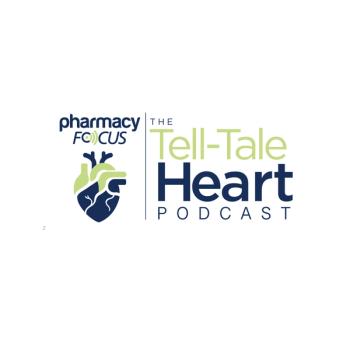
Stratification and Differentiations of Specialty Pharmacies
Due to the uniqueness of each disease state and motivations of each player in the market to capture revenue from the growing industry, there is an abundance of specialty pharmacy solutions available in the market.
As of 2018, there were more than 900 pharmacies with a specialty accreditation in the United States (URAC, Accreditation Commission for Health Care, or Center for Pharmacy Practice Accreditation).1 There are even more entities that consider themselves a specialty pharmacy; however, there is no framework to become a specialty pharmacy.
The size, specialization, and types of specialty pharmacies vary widely, including very large pharmacy benefit manager (PBM)-owned specialty pharmacies and manufacturer-owned specialty pharmacies, which try to offer vertically integrated solutions, as well as small, specialized, independent pharmacy service providers.
Although the number of accredited specialty pharmacies has grown over the past 3 years, consolidation has occurred in the industry, as some of the largest independent specialty pharmacies have been acquired by or merged with PBMs, payers, retail chains, and distributors. New types of specialty pharmacies have also risen in recent years to meet the evolving needs of rare and orphan diseases, gene therapies, and other specialized therapeutic areas.
Various forms of new specialty pharmacies aligned with integrated delivery networks (IDNs) have also gained significant popularity in recent years. With so many options for commercializing a specialty product, it is important for manufacturers to understand the types of specialty pharmacies in the market and determine the right commercialization strategy that fits their needs.
PBM- and payer-owned specialty pharmacies are the largest type in the industry and continue to gain market share. According to the Drug Channels Institute, the 4 largest specialty pharmacies in this category (CVS Health, Accredo, Alliance Rx, and BriovaRx) account for more than 70% of all specialty prescription revenue as of 2018.2 This growth is predominately due to these entities leveraging their payer/PBM networks and shifting volume to their own specialty pharmacies.
This may present potential conflicts of interest as PBMs sell services to reduce payer costs, whereas their specialty pharmacy revenues are driven by dispensing more volume and higher cost drugs. Although these entities dominate market share growth, some have struggled to maintain profitability.
Diplomat Pharmacy Inc, for example, the fifth largest specialty pharmacy by revenue in 2018, saw a 2019 third-quarter net loss of $177 million. By the end of the year, Diplomat Pharmacy Inc had accepted UnitedHealth Group Inc’s buyout offer for more than $300 million, shortly after stating it was unable to pay off some of its debt amid the highly competitive specialty landscape.
While Diplomat has struggled significantly in recent years, other major PBM- and payer-aligned specialty pharmacies continue to grow from a top- and bottom-line perspective. BriovaRx for example, owned by UnitedHealth Group, grew 29% year-over-year from 2017 to 2018.
Large distributors have also historically been involved with specialty pharmacy. Many of these providers, such as AmerisourceBergen, Asembia, Eversana, and McKesson, provide an end-to-end solution for biopharma. They are able to offer services as a specialty distributor, third-party logistics company, hub services provider, non-commercial pharmacy for patient assistance program product dispensing, and specialty pharmacy for commercial product dispensing.
Although this may seem like a 1-stop shop solution, some manufacturers may be weary if they do not feel comfortable with each subsidiary’s solution. In 2016, McKesson purchased Biologics, a historically oncology-focused specialty pharmacy. Biologics’ focus in a unique niche of pharmacy has led to strong growth, which is expected to continue over the next few years.
The growth in oncology pharmacy will likely be fueled in part by the innovations in immuno-oncology. As of October 2019, more than 3800 immuno-oncology trials are underway, up 91% from 2017. Approximately one-third of these trials are in the clinical stage.4 Biologics and other oncology specialty pharmacies, such as Onco360, are well positioned to capitalize on this growth.
Although in office dispensing is becoming increasingly popular within oncology, specialty pharmacies are frequently still used for their robust data reporting capabilities, ability to navigate the complex reimbursement landscape, and experience with risk evaluation and mitigation strategy programs commonly required for these products.
Other independent specialty pharmacies have also been able to focus on unique niches that have enabled them to grow at even faster rates. For example, PANTHERx Rare Pharmacy has built its reputation by focusing exclusively on launching and managing complex rare and orphan diseases. PANTHERx Rare builds interdisciplinary “RxARECARE” teams fully dedicated to a specific product.
This allows PANTHERx care teams to gain therapy-specific expertise and allows them to build relationships with patients and health care providers when interacting via phone. PANTHERx’s focus on rare and orphan diseases has led it to become the fastest growing specialty pharmacy in the industry’s history, according to the Drug Channels Institute, growing from $42 million in 2016 to $726 million in 2018.
This strategy will likely lead to continued success for PANTHERx Rare, as orphan drug sales are forecast to grow at a 12.3% compound annual growth rate over the next 5 years, according to Evaluate Pharma’s 2019 Orphan Drug Report.4 PANTHERx has also entered the rare oncology space with a unique rare pharmacy approach.
This is also a large and growing market for PANTHERx, as 36% of orphan drugs are used to treat rare forms of cancer. PANTHERx is well positioned to capitalize on cell and gene therapies given the rare populations, high-touch approach, and a recently announced partnership with Cardinal Health. As of the second quarter of 2019, there were more than 1000 clinical trials underway for cell and gene therapies, of which 94 are in phase 3.
IDN-aligned pharmacies are also a fast-growing segment of the industry. These entities are able to leverage their electronic health records to provide an integrated and consistent experience to each patient.
This model gives each provider of care a full view into each patient’s case, from the physician to the pharmacist. In many cases, this strategy has been shown to drive down abandonment rates. In September 2019, IDN-aligned Fairview Specialty Pharmacy was recognized by the National Association of Specialty Pharmacy as Specialty Pharmacy of the Year.
Fairview Specialty Pharmacy was created in 1997 to help University of Minnesota transplant patients with the complex medication regimens required after organ transplantation. Fairview has since expanded into almost all areas of specialty pharmacy. These IDN-aligned pharmacies also offer the unique advantage of being able to work with patients in-person and oversee every step of their treatment.
Asembia offers a unique IDN specialty pharmacy model, primarily focused on allergy and dermatology. Physicians are able to login to their ePrescribing tablet and submit a prescription via the Asembia1 platform, which is then processed at an Asembia hub location.
The hub is able to initiate any prior authorizations and act as a call center resource for health care providers or patients who have questions related to a prescription. Shields is also providing another unique model in the IDN space. Shields helps health systems and IDNs set up their own central fill capability so they can act as their own central pharmacy for all hospitals and clinics included in their health system. Pharmacy liaisons at Shields are assigned to each specialty clinic at the hospital such as cystic fibrosis, multiple sclerosis, and rheumatoid arthritis.
There are some operational disadvantages however to IDN-aligned pharmacies, especially for rare and orphan conditions. Many of these IDN-aligned specialty pharmacies are unable to provide a solution for manufacturers nationally.
If a manufacturer is looking to launch in a limited network, this may cause major issues unless the disease state is only managed at a highly limited number of centers of excellence across the United States without shipping capabilities. Many IDN-aligned pharmacies also do not have the system and data capabilities to capture and report upon the sophisticated needs of new specialty pharmacy products. Additionally, some entities lack operational redundancies and the ability to handle complex therapies.
Some specialty pharmacies have been recently leveraging their retail presence. Walgreens and CVS Health for example have introduced new strategies that leverage the traffic through their expansive brick-and-mortar locations, supplemented with central fill mail order centers.
This “specialty at retail” model allows patients to pick up specialty medications, along with traditional medications, delivered to a local pharmacy. With the sheer number of stores and pharmacists, combined with the fact that 98% of prescriptions dispensed in retail pharmacies are non-specialty, there is limited opportunity for high-touch rare and ultra-rare conditions using this model. However, these models may show success for medium-cost products with high barriers to entry sometimes, referred to as “tweeners.”
These entities are better equipped than other traditional pharmacies to manage the complexities such as prior authorizations, complex reimbursement, and cold-chain storage, as they can utilize resources from their high-touch specialty pharmacy locations. CVS Health’s Specialty Connect Program gives patients the choice between in-store pickup and having their medications delivered directly to their home.
Early results of their pilot program have shown that >50% of patients chose to pick up their specialty medications at a CVS pharmacy. Ninety-seven percent of patients successfully started on therapy after only their first interaction at a CVS location.
Due to the uniqueness of each disease state and motivations of each player in the market to capture revenue from the growing industry, there is an abundance of specialty pharmacy solutions available in the market. Even specialty pharmacies within specific categories have very unique attributes and appear entirely different from one another.
This wide variety of unique players in the space has grown the popularity of the phrase, “If you’ve seen 1 specialty pharmacy, you’ve seen 1 specialty pharmacy.”
In order to navigate this complex space, manufacturers frequently turn to consultants who are experts in helping them select the appropriate specialty pharmacy for their product. Some manufacturers will hire consultants who work with the manufacturer onsite for months leading up to the product launch. Popular consultants in the space include Blue Fin Group, TwoLabs, Protean, Vivaleas, Dedham Group, Archbow, and D2.
These entities aim to understand the manufacturers’ patient journey and bring in the most suitable specialty pharmacy partners to fit their unique needs.
Sources
- Fein, A. J. (2019, April 23). The Specialty Pharmacy Boom: Our Exclusive Update on the U.S. Market. Retrieved November 30, 2019, from https://www.drugchannels.net/2019/04/the-specialty-pharmacy-boom-our.html.
- Fein, A. J. (2019, April 9). The Top 15 Specialty Pharmacies of 2018: PBMs Keep Winning. Retrieved November 30, 2019, from https://www.drugchannels.net/2019/04/the-top-15-specialty-pharmacies-of-2018.html.
- Diplomat Announces Sale of Certain Assets of Envoy Health Management, LLC to Diligent Health Solutions, LLC. (2019, October 16). Retrieved November 30, 2019, from http://ir.diplomat.is/investors/investor-news/investor-news-details/2019/Diplomat-Announces-Sale-of-Certain-Assets-of-Envoy-Health-Management-LLC-to-Diligent-Health-Solutions-LLC/default.aspx.
- Pomeranz, K. (2019, April 1). EvaluatePharma: Orphan Drug Report 2019. Retrieved December 1, 2019, from https://info.evaluate.com/rs/607-YGS-364/images/EvaluatePharma Orphan Drug Report 2019.pdf?mkt_tok=eyJpIjoiWWpVMk1UVmtNRFpqT0dFeiIsInQiOiIrcmZ3QjNwamZWWVwvZ1ZkcU5XS2E3Rk5oNXA5MXZJVUVCRitMQXpQd0sxMGJPU0JhdGRWbVJQQkZrc0xZNDNPSXRNM09wMGh2OEFXNXFNN1wvb1plT.
- Pagliarulo, N. (2019, September 27). Cancer immunotherapy boom showing no sign of slowdown. Retrieved November 30, 2019, from https://www.biopharmadive.com/news/cancer-immunotherapy-research-growth-drug-study-oncology/563881/.
About the Author
Gannon Vanscoy is the Director of Specialty Markets at RareMed Solutions, the nation’s first rare disease focused specialty pharmacy hub. Gannon leads RareMed’s overall business development efforts and manages strategic partnerships across the company’s portfolio. Gannon began cultivating his expertise in rare and orphan disease states at PANTHERx Rare Pharmacy, where he participated in a rotational development program focused on hub services. Prior to working at PANTHERx Rare, Gannon served as a leader at a number of large multi-national banks, both in internal and client-facing roles. Gannon earned his Bachelor of Business Administration degree from the University of Miami and is currently pursuing a Master of Pharmacy Business Administration (MPBA) from the University of Pittsburgh, a 12-month, executive-style graduate education program designed for working professionals striving to be tomorrow’s leaders in the business of medicines.
Newsletter
Stay informed on drug updates, treatment guidelines, and pharmacy practice trends—subscribe to Pharmacy Times for weekly clinical insights.


















































































































































































































